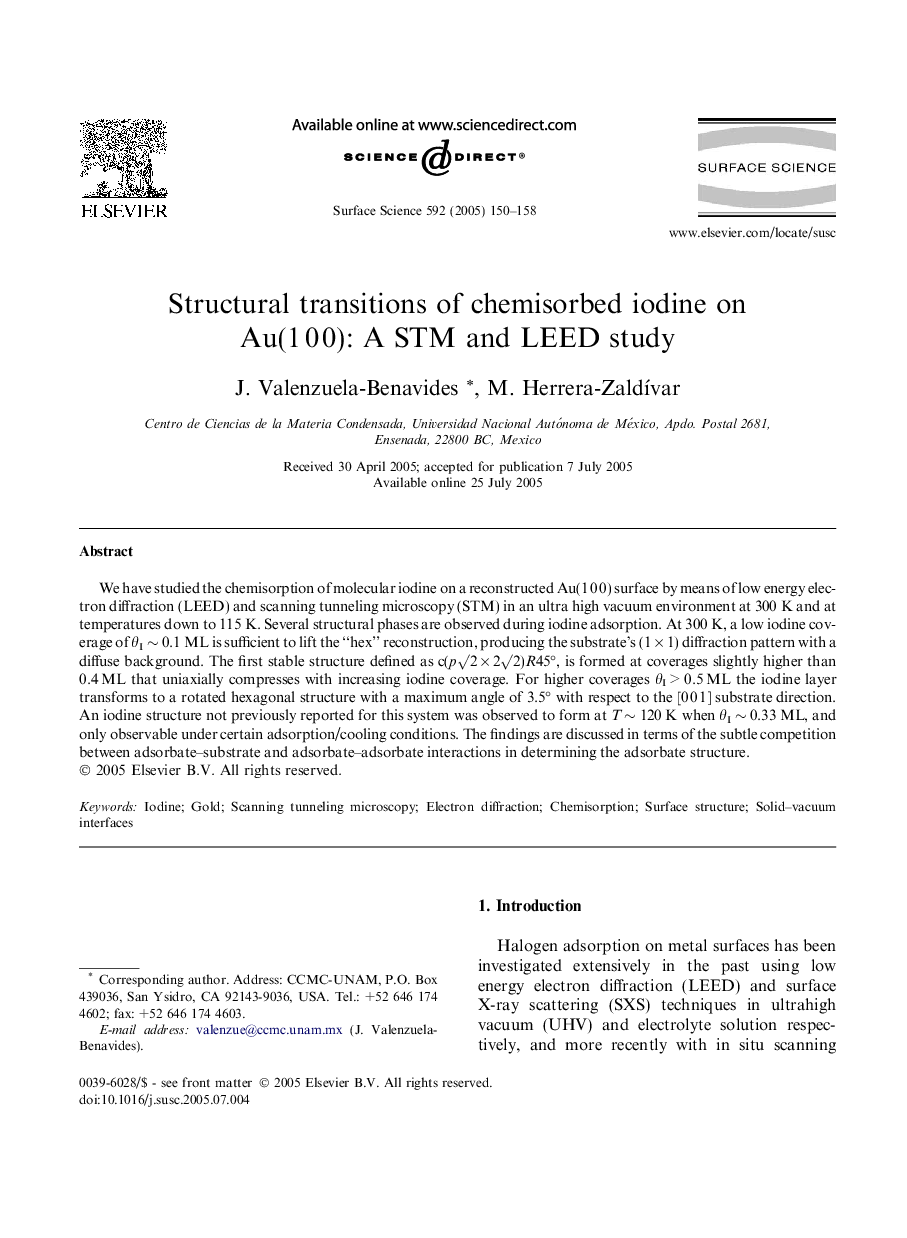| Article ID | Journal | Published Year | Pages | File Type |
|---|---|---|---|---|
| 9594550 | Surface Science | 2005 | 9 Pages |
Abstract
We have studied the chemisorption of molecular iodine on a reconstructed Au(1 0 0) surface by means of low energy electron diffraction (LEED) and scanning tunneling microscopy (STM) in an ultra high vacuum environment at 300 K and at temperatures down to 115 K. Several structural phases are observed during iodine adsorption. At 300 K, a low iodine coverage of θI â¼Â 0.1 ML is sufficient to lift the “hex” reconstruction, producing the substrate's (1 Ã 1) diffraction pattern with a diffuse background. The first stable structure defined as c(pâ2 Ã 2â2)R45°, is formed at coverages slightly higher than 0.4 ML that uniaxially compresses with increasing iodine coverage. For higher coverages θI > 0.5 ML the iodine layer transforms to a rotated hexagonal structure with a maximum angle of 3.5° with respect to the [0 0 1] substrate direction. An iodine structure not previously reported for this system was observed to form at T â¼Â 120 K when θI â¼Â 0.33 ML, and only observable under certain adsorption/cooling conditions. The findings are discussed in terms of the subtle competition between adsorbate-substrate and adsorbate-adsorbate interactions in determining the adsorbate structure.
Related Topics
Physical Sciences and Engineering
Chemistry
Physical and Theoretical Chemistry
Authors
J. Valenzuela-Benavides, M. Herrera-ZaldÃvar,
